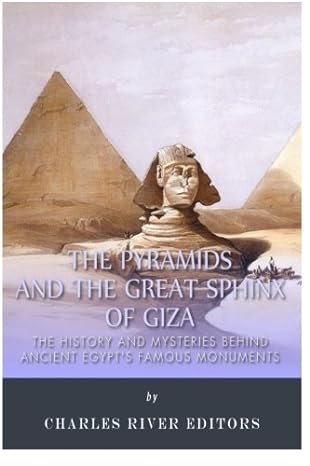The Pyramids and the Great Sphinx of Giza: The History and Mysteries Behind Ancient Egypt's Famous Monuments

https://FreeCourseWeb.com
English | 2013 | ISBN: 1492760323 | 96 pages | EPUB | 3.2 MB
*Includes pictures of the Sphinx and the pyramids.
*Discusses the theories about their age, construction, and purpose.
*Covers the archaeological and cultural history of the Sphinx and the pyramids.
*Includes footnotes and a Bibliography.
“When we find something new at Giza, we announce it to the world. The Sphinx and the Pyramids are world treasures. We are the guardian's of these treasures, but they belong to the world.” – Zahi Hawass, Egyptologist
The pyramids of Egypt are such recognizable symbols of antiquity that for millennia, people have made assumptions about what they are and why they exist, without full consideration of the various meanings these ancient symbolic structures have had over the centuries. Generations have viewed them as symbols of a lost past, which in turn is often portrayed as a world full of romance and mystery. This verbal meaning has become associated with the structures through the tourism industry, where intrigue obviously boosts ticket sales. In fact, the Egyptian pyramids are so old that they were also drawing tourists even in ancient times. In antiquity, the Great Pyramid of Giza was listed as one of Seven Ancient Wonders of the World, and it is the only one still surviving today.
The age and structural integrity of the pyramids also make them symbols of longevity and power, which is only fitting because those are two purposes the ancient pharaohs who commissioned these works intended them to serve. For the pharaohs, the construction of these large monuments presented an opportunity for them to showcase their influence and become something to be remembered by, both in the society they ruled and in the annals of history that would follow. Even as new dynasties came and went, and even as Egypt was subjected to foreign domination and rulers from across the world, the pyramids have continued to stand as a prominent testament to Ancient Egypt’s glorious past.
The famous “Riddle of the Sphinx”, told by Sophocles in his play Oedipus Rex in the 5th century B.C., characterized the sphinx as a clever and powerful creature, and even today young kids learn about the story. But the mysteries of the Egyptian statue were discussed even among the ancient Romans; Pliny the Elder, the famous Roman author and philosopher killed in Pompeii during the eruption of Mount Vesuvius in 79 A.D., wrote in his Natural Histories that contemporary Egyptians considered the Sphinx a “divinity” and "that King Harmais was buried in it".
Nearly 2,000 years later, people still wonder about the origins of the statue, but most believe it was constructed around the middle of the 3rd millennium B.C. As anyone who has seen the statue is now aware, it has suffered weatherization damage, and even the sources of the damage has been debated and turned into the stuff of legend, as evidenced by the story of Napoleon’s French soldiers shooting off the Sphinx’s nose. In conjunction with that, there are mysteries over the archaeological history of the statue, including whether the ancient Egyptians themselves attempted to excavate the Sphinx and clear the sands that were beginning to cover it up.
This book comprehensively covers the facts, mysteries, and theories surrounding the pyramids and the Sphinx. Along with pictures and a bibliography, you will learn about them like never before.
Download from free file storage
